Launch
January 2023
Data-driven, digital fundraising strategy
Future-proofing the ICRC’s digital fundraising
Successes
Fit for the future with a holistic fundraising strategy
Online share of total revenue tripled
Fit for the future
The digital fundraising landscape is constantly evolving and organizations are faced with the challenge of adapting and becoming fit for the future. When the ICRC (International Committee of the Red Cross) was facing various challenges that were causing fundraising success to stagnate, we came to support them. Together, we developed a holistic fundraising strategy that not only enables the ICRC to meet current challenges with confidence, but also ensures its long-term success.

Challenge – Tapping into new digital ground
Having an effective fundraising strategy is crucial in the fast-paced digital world. For the ICRC, there were three main pain points that hampered its fundraising success:
- Emergency fundraising setup: Due to the high trust and reputation of the ICRC, there was a huge rush to the website during the Ukraine crisis as many people wanted to support the important work of the organization. However, a vulnerability became apparent during this critical time when a technical failure of the website led to a significant loss of donations. This sudden outage made it clear that the existing infrastructure and established processes were not up to an extreme stress test.
- Expandable online presence: A look at the donation figures showed that online income accounted for only 3% of the ICRC’s total donation income in 2021. Compared to 12% in the USA (source: Blackbaud Institute) and 6% in Switzerland (source: ZEWO), the ICRC was well below the industry average. These figures highlighted the need to expand digital fundraising capacities in order to position itself in the fundraising market and better exploit the potential of digital fundraising.
- Lack of donor retention: The ICRC has struggled to keep up with current trends in donor retention. Essential measures such as personalized, automated and targeted communication (such as a Donor to Regular Donor Journey) and recurring donation programs were missing, which affected the long-term retention of supporters.
These challenges were the reasons for the ICRC to contact getunik, as we also repeatedly encounter organizations facing similar challenges. Organizations often have several promising approaches, but the common thread that brings all the measures together coherently is missing. This was also the case with the ICRC, which would benefit from a more comprehensive digital fundraising strategy. After all, a well-thought-out fundraising strategy can make the difference between stagnant growth and dynamic development.
Solution – A holistic, data-driven fundraising strategy
A successful digital fundraising strategy always starts with a clear vision. It is at the heart of every strategy and shows where the journey should take us. For the ICRC, it was clear that they wanted to be 90% paperless by 2030. It also wanted to be in the public eye throughout the duration of conflicts and related humanitarian crises in order to successfully capitalize on the willingness to donate. It also wanted to ensure a seamless, fully automated and data-driven donor experience. Last but not least, the ICRC wanted to position itself as a recognized industry leader. To achieve all of this, a data-driven fundraising strategy was needed. Data provides insight into how effective measures are and where optimization is needed. This enables organizations to precisely measure success and adjust their measures in real time. This is the basis for targeted and personalized communication with donors, which leads to greater loyalty and satisfaction.
«Our collaboration with the ICRC was focused on future-proofing their digital fundraising strategy. Through a customized, data-driven approach, together we laid the foundation for sustainable success. The results achieved show that the commitment and investment in a well-thought-out fundraising strategy have set a strong foundation—now they are well-prepared and have a clear path for the future!»
Astrid Vancraeyenest, Customer Success Manager at getunik
Implementation – ICRC under the microscope
Developing a successful fundraising strategy requires thorough analysis and structured planning. The journey from first step to implementation involves several key phases that together create an effective foundation for long-term success. When working with the ICRC, we went through these phases together, using specific methods and approaches to put the strategy into practice:
Status quo and goals
- Workshop to record the pain points and define the goals: This workshop identified the challenges the team was facing at the ICRC. We also took a look at the tools being used. There was a joint definition of clear, measurable goals, which promoted team commitment on the one hand and an understanding of the strategy on the other. Both helpful approaches to ensure that everyone involved is working towards a common goal.
- Donor Experience Audit: This involved a comprehensive quantitative and qualitative review of donors’ key touchpoints with the ICRC. We identified strengths and weaknesses of the donation process and assessed communication and interactions with donors across all channels.
- Market Comparison & Competitor Analysis: What can the ICRC learn from other organizations? How can the ICRC use trends in a targeted manner? We analyzed the fundraising market and sister organizations to incorporate competitive insights into strategy development. We also identified trends and best practices that can be applied to the ICRC to integrate innovative approaches.
Tactics and implementation roadmap
- Definition of tactics: Concrete tactics were developed based on the findings from the previous steps. These outline precise measures to achieve the defined goals. These include specific actions to improve the donor experience, targeted communication strategies and optimization of the online presence. It is important to strike a balance between quick wins and medium to long-term measures. This ensures that the first successes are achieved within a very short time by implementing the strategy.
- Development of the roadmap: A detailed implementation roadmap was created to translate the strategy into actionable steps. This roadmap sets out clear priorities, defines responsibilities and allocates the necessary resources. The roadmap provides a plan for strategy implementation. It is essential to ensure that the strategy is implemented and does not gather dust in a drawer.
While the tactics were being defined and the roadmap finalized, the ICRC was already starting to implement the first improvements. The straightforward recommendations from the Donor Experience Audit were immediately put into practice. This gave the strategy momentum even before final approval and increased its visibility within the organization – an important point, as strategies can often be daunting or overwhelming. Our tip: Create a balance between short-term, easy-to-implement optimizations – which can be realized without great effort and bureaucratic hurdles – and long-term transformations that require comprehensive cultural changes, commitment and investment. In this way, immediate successes are achieved and at the same time larger, sustainable changes are initiated that support the achievement of overarching goals in the long term.
Effect – Strengthened for the future of fundraising
The analysis of the status quo showed that the ICRC had already laid a solid foundation. The ICRC had an allocated budget, a clear overarching vision and a strong social media presence with relevant content. Monthly reporting meetings encouraged internal information sharing and a marketing automation tool had recently been introduced. These factors significantly support the implementation of the strategy. The ICRC has been working on implementing the jointly developed strategy for two years and has already achieved significant success:
- Before the fundraising strategy was developed, the digital share accounted for just 3% of fundraising income (2021). One year after the development and implementation of the strategy, the digital share already accounted for 9% of fundraising income, which could also be maintained in 2023.
- With the implementation of an individualized rapid response strategy developed by us, the ICRC is now live with a fundraising campaign within a few hours and can therefore react very quickly to crises and disasters. TWINT was introduced as an important channel as part of the strategy. With a TWINT emergency campaign for Libya, for example, the ICRC was able to generate a considerable income and reach almost 3000 donors!
- Today, the ICRC also has a successful “always-on retargeting” strategy for Google Grants and Ads, which it uses to drive quality traffic to its own website by bidding on specific keywords, as well as for Display and Web Push.
- An important success of the collaboration with the ICRC is the implementation of two automated donor journeys used for the end of the year – during the peak season: Lead-to-Donor and Retention. These journeys enable the ICRC to develop (potential) donors along the donor lifecycle in a targeted manner. This can significantly increase the efficiency of donation campaigns and continuously strengthen long-term donor loyalty.
This progress shows that a solid digital fundraising strategy is of great importance and a decisive factor in exploiting the potential of digital fundraising. Through the ongoing implementation of the strategy, continuous adjustments and optimizations, the ICRC is getting closer to its vision day by day and can respond effectively to future challenges with the necessary flexibility. The path to sustainable fundraising success is thus clearly mapped out.
«With getunik, we were able to develop a sound strategy that is perfectly aligned with our long-term goals and gives us a clear focus. Thanks to the ongoing collaboration within the framework of a consulting retainer, it is possible to successfully implement our strategy. We particularly appreciate the detailed and thorough plan we received from getunik, which provides us with clear to-dos for an efficient way of working.»
Gabriella Bertacchi, Individual Giving Manager at ICRC
getunik services
getunik was able to support the International Committee of the Red Cross (ICRC) in these work steps:
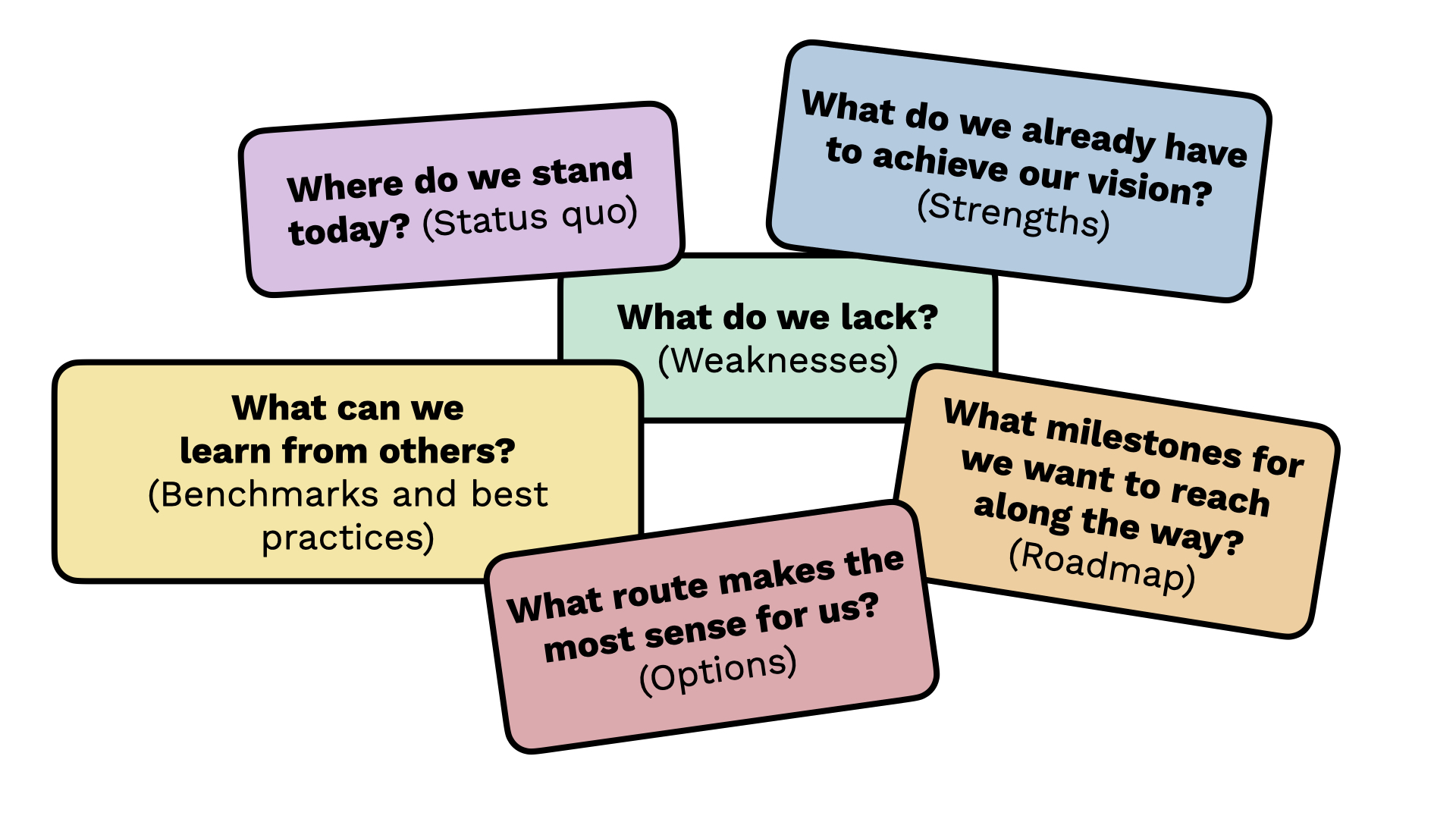
The fundraising vision
The trick is to break down the digital fundraising vision into its individual components. It encourages you to first take a look at the current status: Where are we today? It then analyzes what strengths are already in place to realize the vision and what is still missing to achieve the goals. Another important aspect is to learn from others by using benchmarks and best practices. Based on these findings, milestones can be defined and the best way to implement the vision step by step can be chosen.
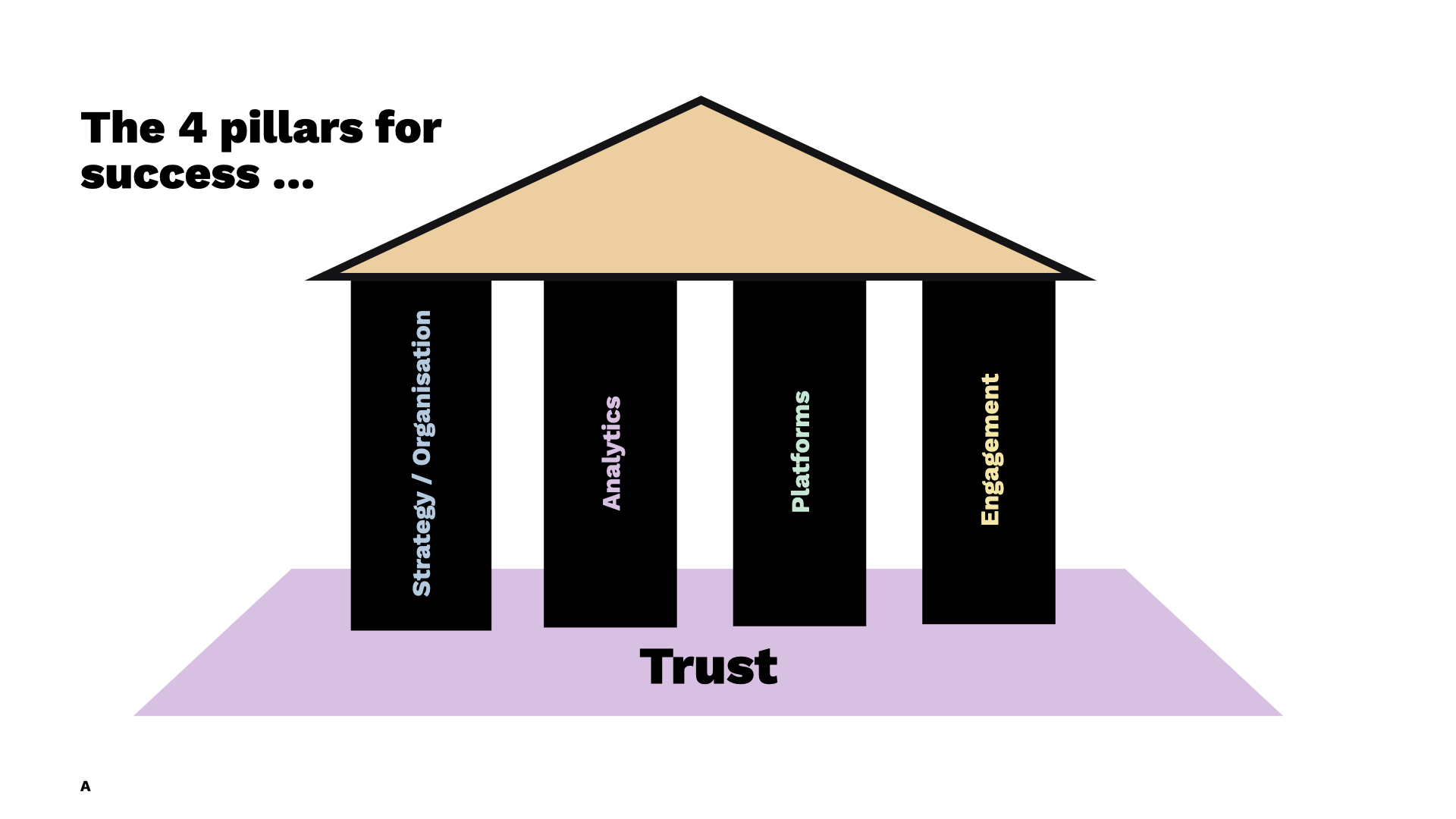
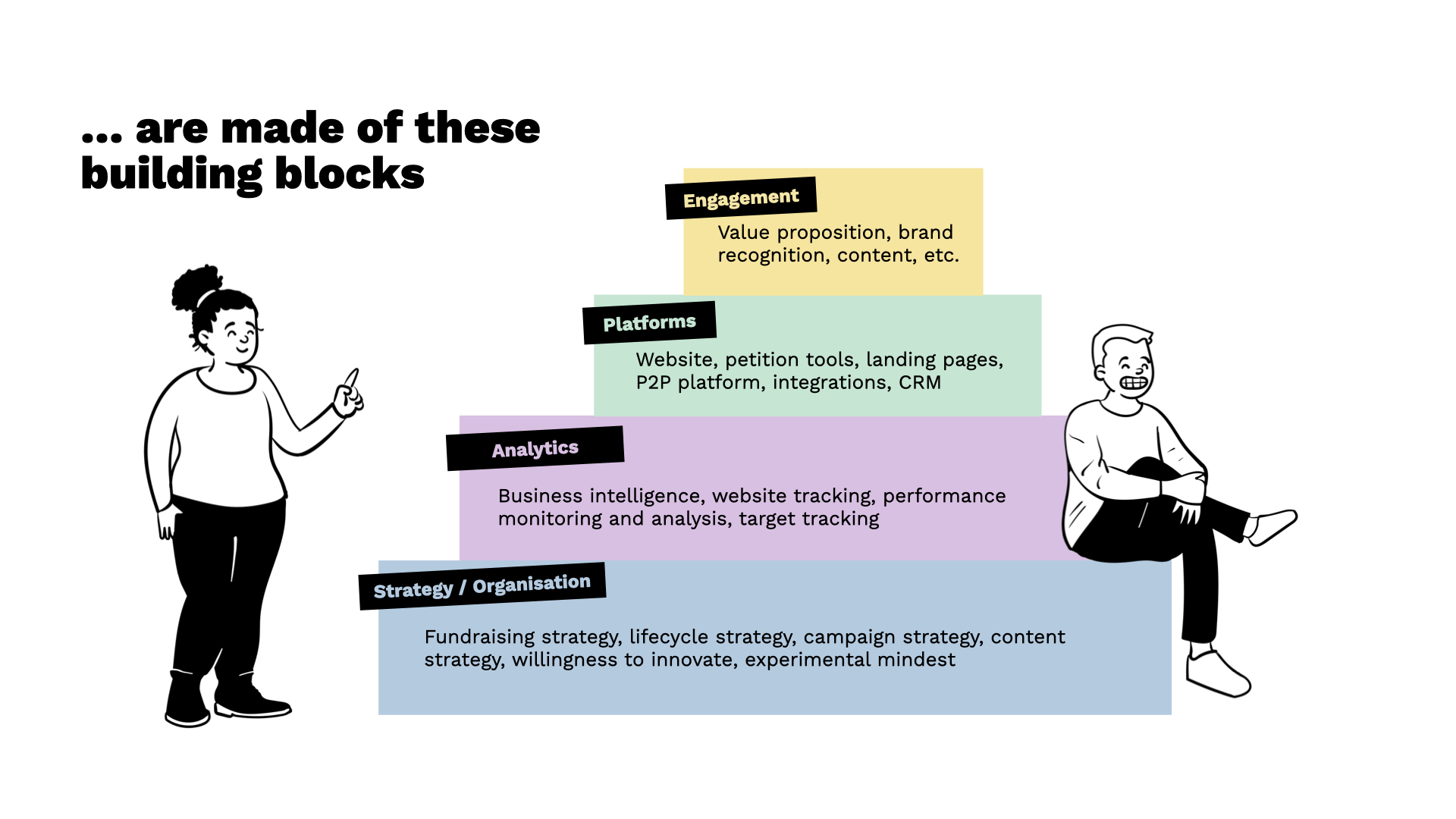
The four pillars for success
In order to answer the question “Where do we stand today?”, we began with a workshop to analyze the status of the ICRC’s digital fundraising over the year. To structure our findings, we used our tried-and-tested framework “The four pillars for success”. This framework enabled us to identify key success factors. We first looked at strategy and organization, which included key elements such as fundraising strategy, lifecycle strategy, campaign strategies, content strategies, as well as a willingness to innovate and an experimental mindset. We then analyzed the data and analytics, looking at business intelligence, website tracking, performance monitoring and analysis, and goal tracking. Platforms also played a central role in our analysis. These included the website, existing petition tools, landing pages, P2P platforms, integrations and CRM systems. Finally, we looked at the value proposition, including brand awareness and content. This comprehensive approach allowed us to identify and evaluate the key success factors of the ICRC’s digital fundraising.
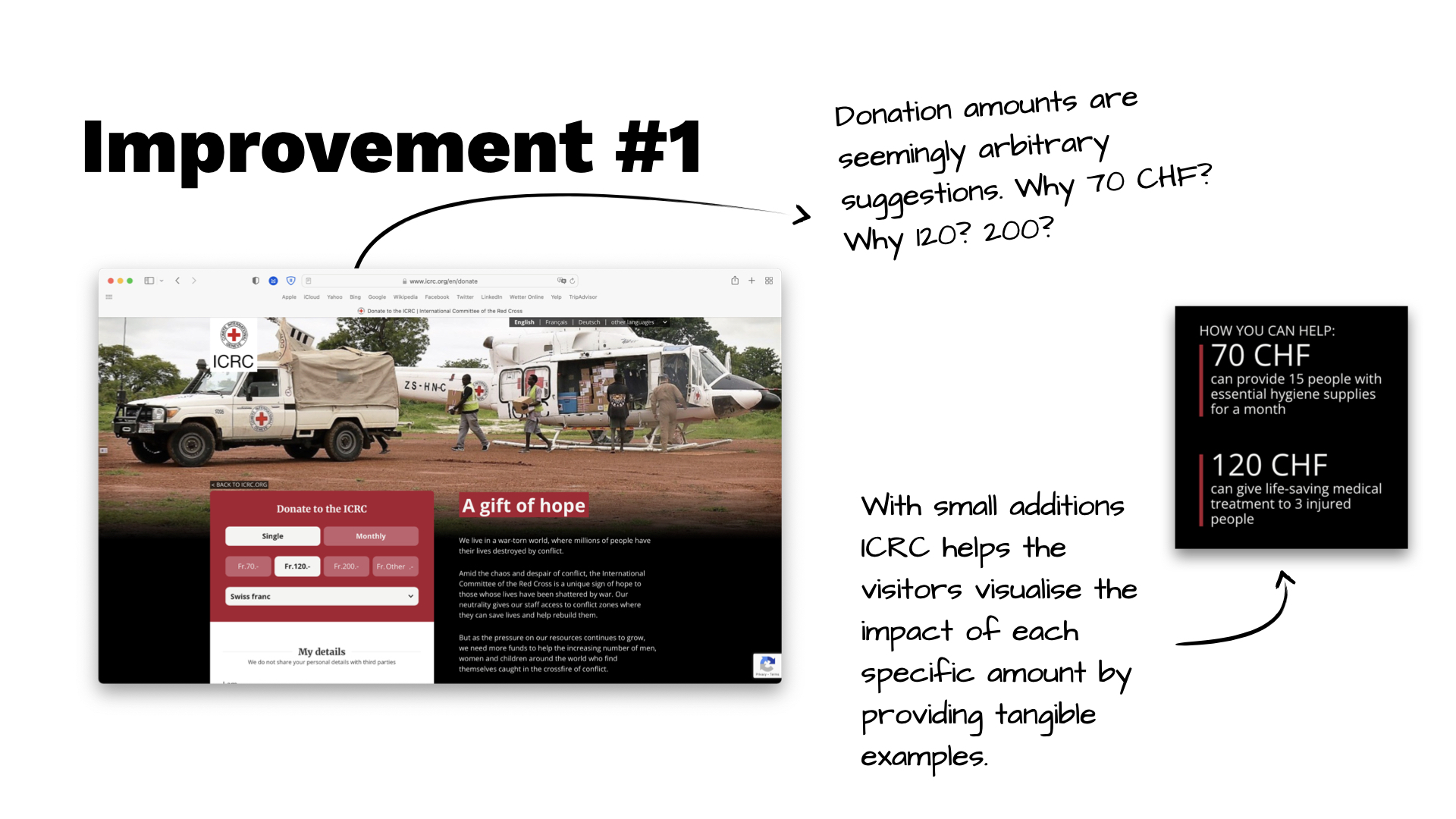
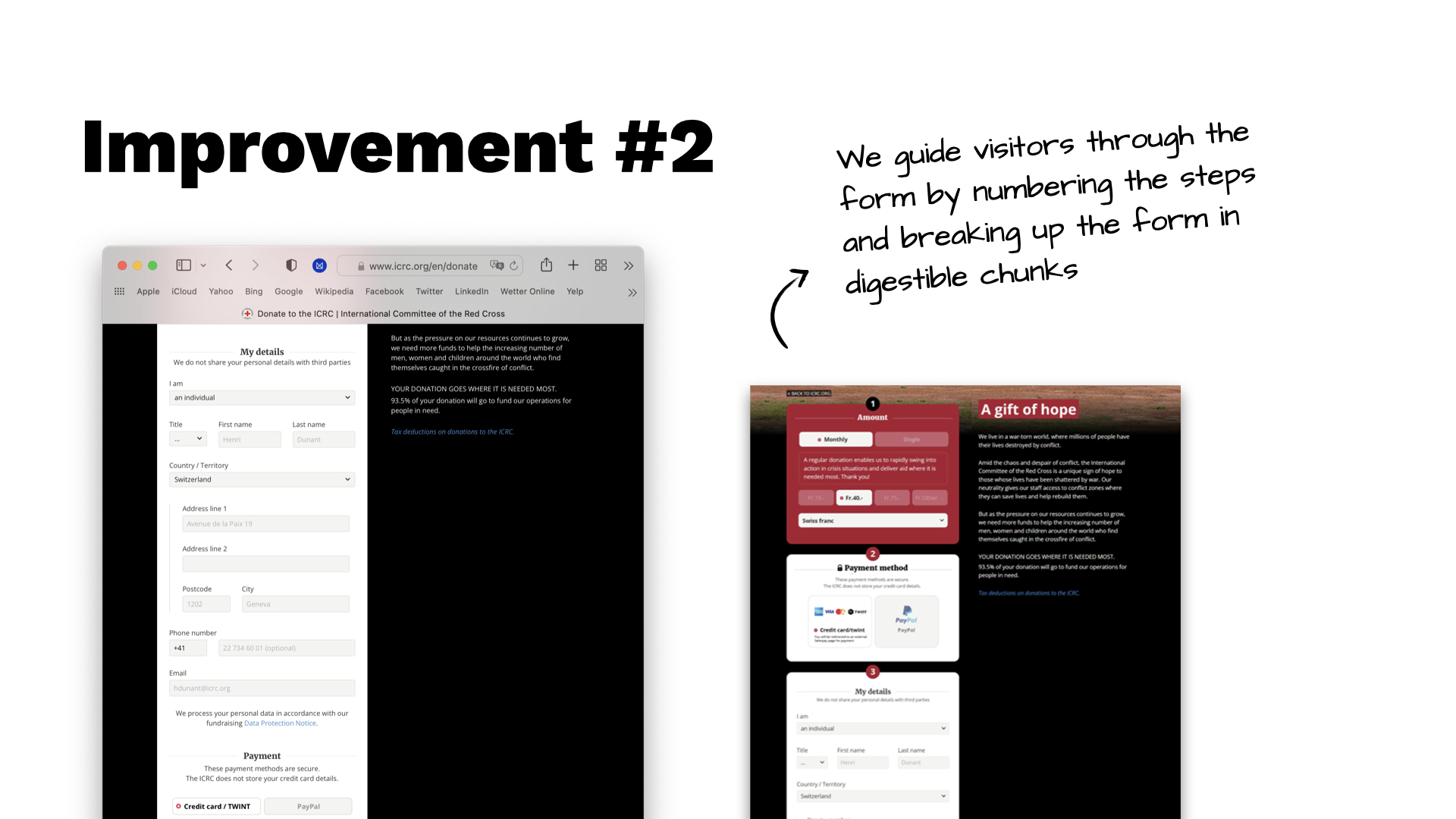
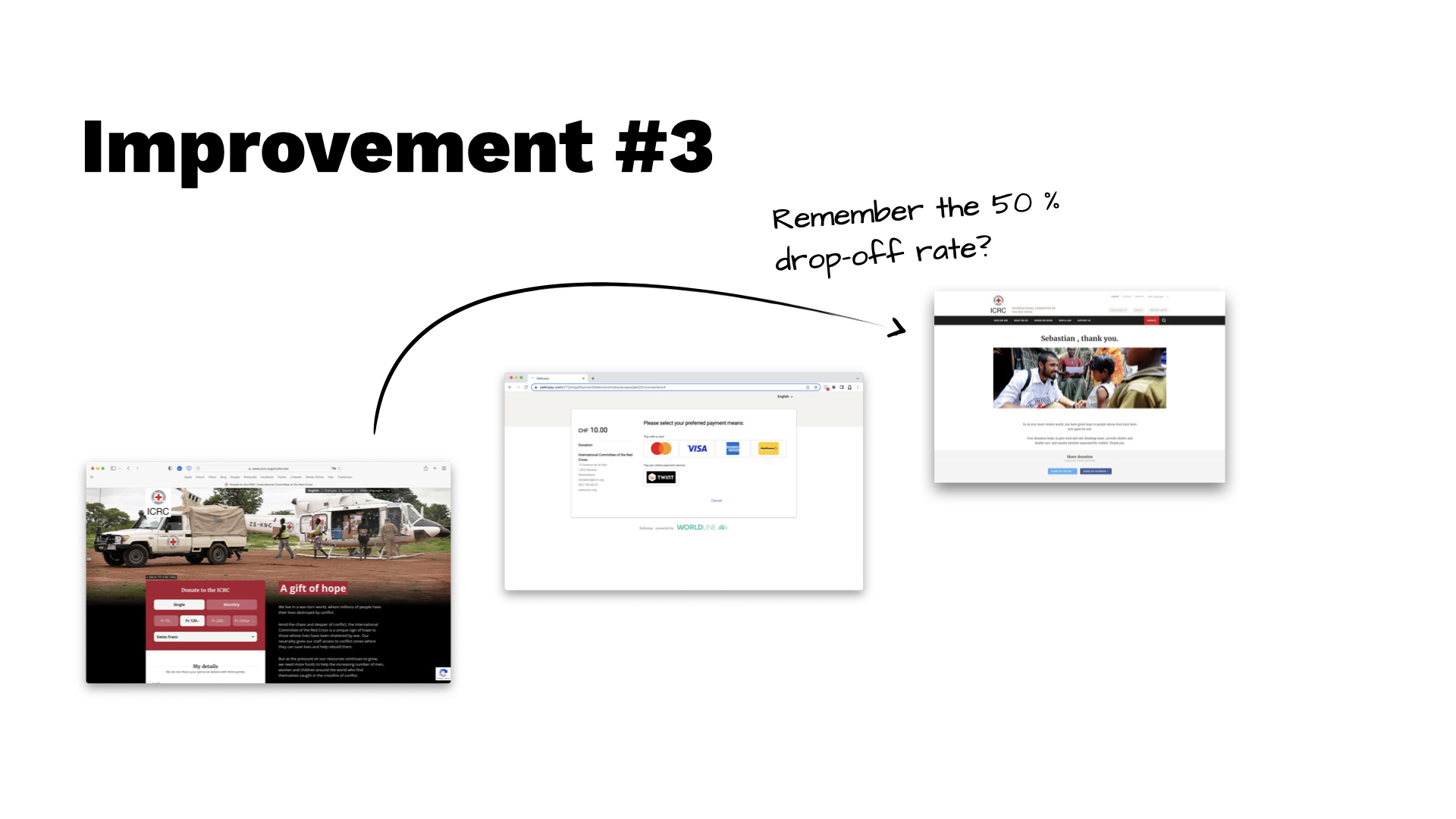
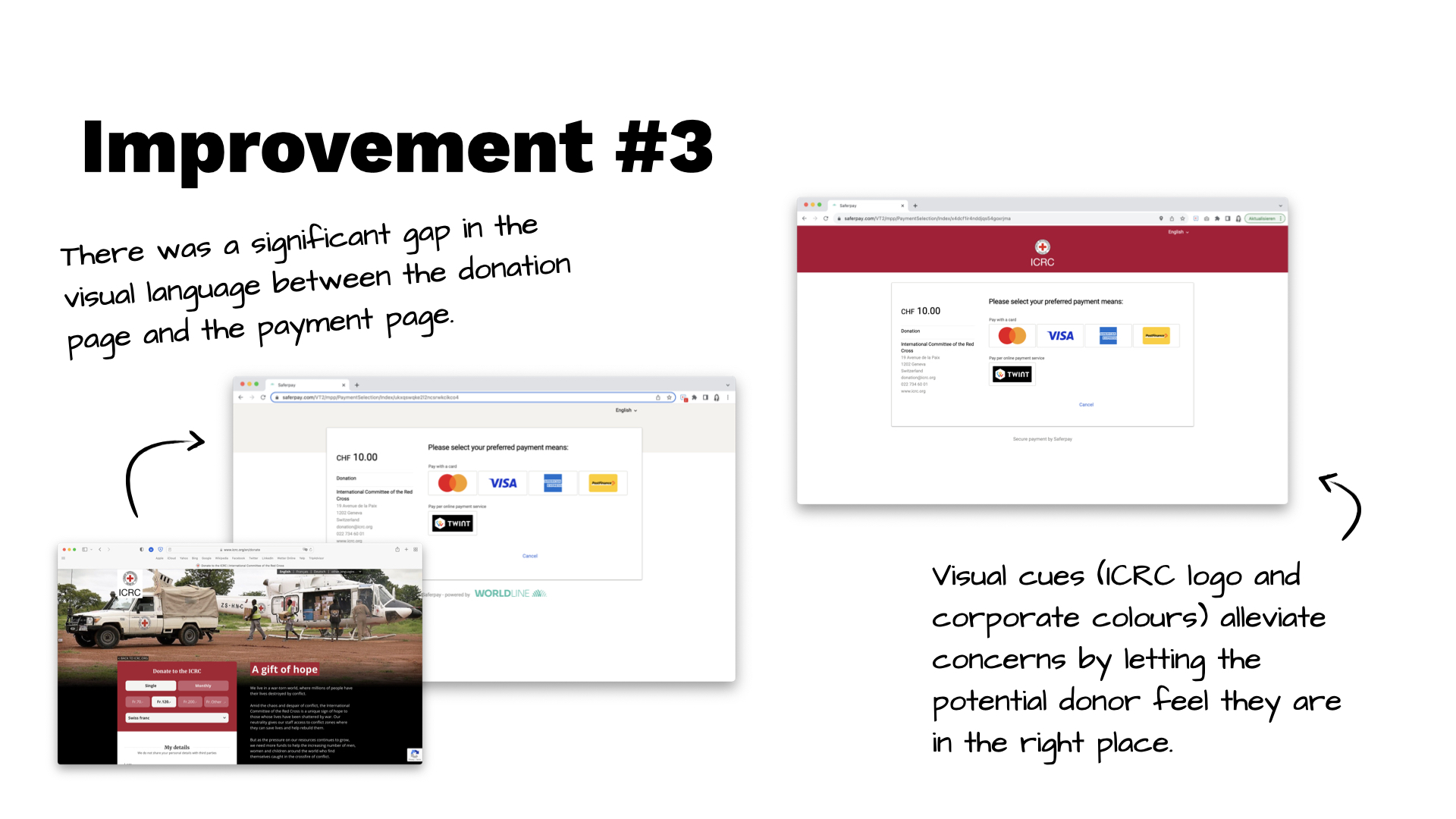
The Low Hanging Fruits in the donation process
The adjustments that the ICRC implemented right away included simple but important changes to the donation process. For example, the ICRC added concrete impact examples for each donation amount so that visitors can better understand the impact of their contribution. A form divided into numbered and easy-to-understand sections guides users step-by-step through the process and prevents them from abandoning it. Previously, there was a clear visual discrepancy between the donation page and the payment page. This has been eliminated by integrating visual elements such as the ICRC logo and corporate colors, which now gives potential donors reassurance and confidence that they are on the right page.
